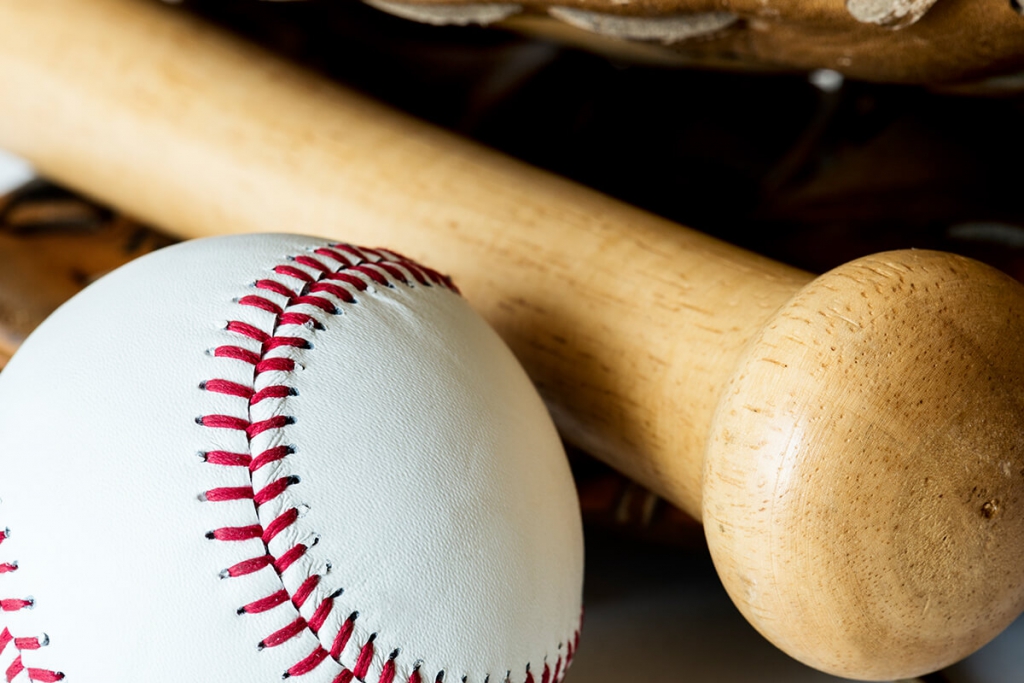Nothing says baseball like the crack of the bat. Along with the aroma of hotdogs and the sight of a lush, green outfield, it is fundamental to our baseball experience. But that sound is largely missing from amateur venues, having been displaced by the teeth-grating ‘tink’ of the aluminum bat.
There are a number of reasons for the substitution which began in the 1970s, chief among them being durability and cost. Back in the day, parents could buy their son a reasonably priced aluminum bat, knowing that he would use it season after season. That is so, because metal bats don’t break like wooden bats. For purely economic reasons, then, families, schools and little league organizations quickly converted to metal. An added bonus was the fact that a ball travels faster and farther when hit with a metal bat. What could be better than that?
Dampening that euphoria is the realization that, while metal bats might not break, they do weaken. Blow after blow on an aluminum bat will fatigue the metal in such a way that the ball no longer jumps from it. To maintain optimum performance, a new bat must be acquired every year or two. Couple that with the new bat technology which, along with adding more carry to the baseball, has greatly increased the cost. The garden variety aluminum bat that your parents bought for you in 1982 was had for a small fraction of the price hung on today’s war clubs. So what are we really saving, cost-wise? It’s pretty much a wash. Cost, however, is secondary to the weightier issues surrounding the exodus of wooden bats.
In 1990, noted commentator and author George Will penned a landmark book on the game of baseball, entitled Men At Work. In it, he revealed the inner workings of the game from the perspective of the hitter, the pitcher, the fielder and the manager. In the section spotlighting the pitcher, he addressed the issue of hurlers arriving at the professional level with underdeveloped arms. Surprisingly, he concluded that metal bats at the high school and collegiate levels were the cause. How on earth could that be?
If you understand the importance of the outside corner, you also understand the importance of being able to pitch inside. If you don’t pitch inside, hitters will hang out over the plate and effectively take the outside corner away from you. That is the purpose for the brush-back pitch – something you don’t see enough at the higher levels of the game these days. A pitcher will pound a hitter inside either to tie him up, move him off the plate and/or set him up for the outside pitch. But that’s easier said than done in amateur ball, since metal bats are more forgiving and will not break when the ball is hit off the handle. A batter swinging metal can muscle that pitch (which should have resulted in a weak grounder to second) into the outfield for a cheap hit.
To compensate, amateur pitching coaches and their staffs have responded by staying out of a hitter’s kitchen. Since pitches were relocated to a point where the hitter could extend his arms, the prescription called for more off-speed and breaking balls in place of baseball’s bread-and-butter pitch, the fastball. Throwing fewer fastballs has resulted in weaker pitching arms, since arm strength is increased by throwing a baseball ever harder and farther and throwing it often. So the move to metal theoretically initiated a sequence of counterproductive adjustments in the area of pitching. Mr. Will’s reasoning is this area is echoed by many professional coaches and players.
At the same time, the inordinate number of breaking pitches thrown at the lower levels of the game has increased the risk of cumulative damage and injury to young pitching arms. Furthermore, with youngsters habitually avoiding the inside part of the plate, they are missing out on a very important part of their training. As we’ve already mentioned, the outside corner is a contested piece of real estate. If a pitcher cannot or will not pitch inside, he is shrinking the strike zone and setting himself up to get hammered by opposing hitters.
From a batter’s perspective, hitting with metal is much easier than hitting with wood. I just illustrated one big reason for that – being able to hang a bad swing on a good pitch and get away with it. Try that with wood and you’ll be left holding a nightstick. Even worse, the so-called ‘sweet spot’ on a metal bat is significantly larger than that of a wooden bat, requiring less precision from the hitter in driving the baseball. For that reason, many hitting coaches will tell their young students to swing wooden bats, particularly when taking BP. Precision is the key to building better hitters and building better hitters is one of the primary goals in amateur baseball. In my opinion, metal bats have thwarted that purpose to a large degree, being too forgiving of flaws in the swing, while at the same time sending false positives to young players and their parents.
Another loss to the game with the advent of metal bats has been the loss of balance. A one hundred and fifty pound second baseman should not be driving the ball to the fence in the opposite field. It’s just not supposed to happen in this game. With aluminum bats, it happens routinely. Just about anyone in the lineup is able to punch the ball through the gap. The result? Coaches now tend to sit back and wait for the big inning, as opposed to putting on a play or two to scratch for a run. Consequently, we have surrendered a big part of the game itself. The stolen base, the suicide squeeze and the sacrifice bunt are but a few of the casualties of Metal-Ball. In the modern quest for more and more offense, I fear that few people have noted that loss. Regardless, we’ve been playing checkers with a chess set since about 1980 and you can hang much of the blame on the metal bat.
An issue I haven’t yet addressed, and one that is driving a growing campaign to outlaw metal, is the increased risk of injury. As we’ve already noted, the ball comes off a metal bat with greater velocity than it does when launched from wood. Especially at risk are the pitcher and the third baseman. At the primary levels of little league it doesn’t appear to be as pressing an issue, since hitters there are still making friends with their swing. Once they reach the age of twelve or thirteen, however, boys begin to turn into young men. The added strength coupled with increased agility and proficiency render the metal bat a potentially dangerous weapon in their hands. Some pitchers and infielders at that level (particularly in girls’ fast-pitch softball) have begun to wear face shileds and even heart guards to lessen the risk of injury. Gee – are we digging a hole for the ladder, here? It makes more sense to get rid of the high performance bats than it does to put body armor on the defense. A growing number of organizations are making that attempt by mandating the new BBCOR and BPF standards. While that is a welcome solution in lessening the danger, it falls far short of offering the same benefits as wood. What you end up with in such a program is restricted flight without the advanced training and game dynamics.
I contend that there is a better solution – one that will lessen the risk of injury, better develop hitters, pitchers and fielders and go along way toward resurrecting a part of the game that has been in suspended animation. Let’s return to the use of wooden bats in amateur baseball. An increasing number of organizations from the collegiate level downward are taking up the banner and doing just that. The reviews from participants are very encouraging as is the growing list of positive benefits. Not the least of these is the fact that professional scouts pay closer attention to a player’s accomplishments in wooden bat leagues. The reason, quite simply, is that his performance there better reflects his relationship to the real world of baseball and is a fairer indication of his ability than his performance in a metal bat league. For instance, that .390 average in a metal bat league could very well translate to a .290 or .300 average in a wooden bat league … but it would be a realistic .300 and that’s what pro scouts and college coaches want to see.
For that reason and a host of others, players and their parents should lobby hard for the return of wooden bats. It would restore balance to the game, provide better training for young hitters and pitchers and offer a more reliable yardstick with which to measure a player’s ability and development.
Besides, I really miss the crack of the bat.
– Bob Totterer






